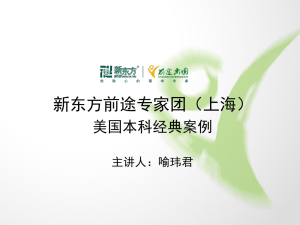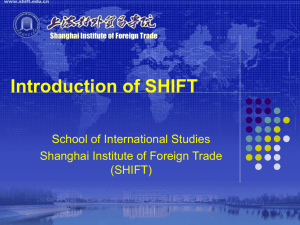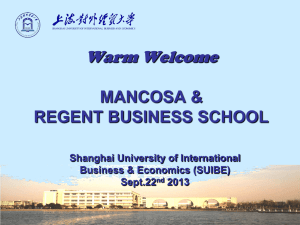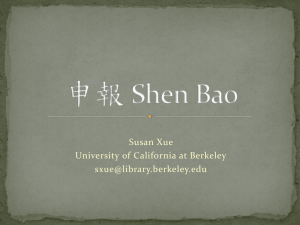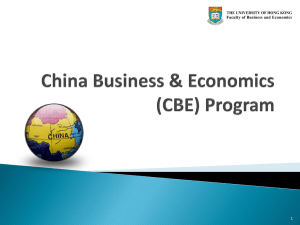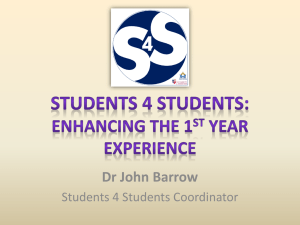by Dr Ben
advertisement
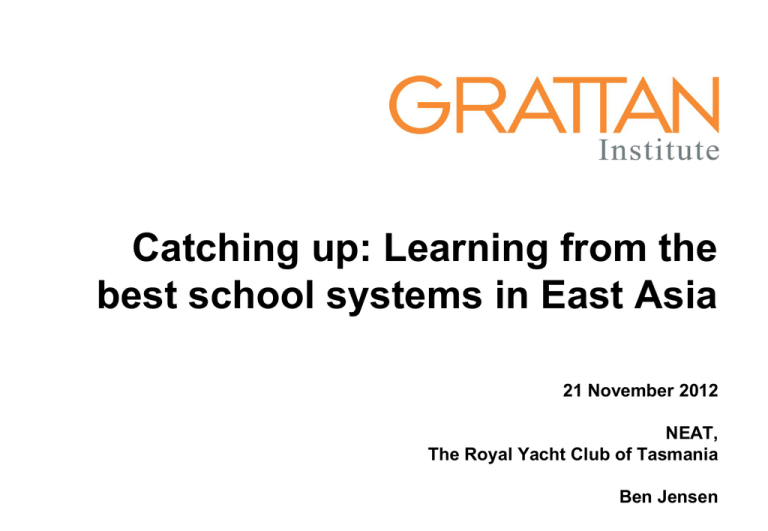
Catching up: Learning from the best school systems in East Asia 21 November 2012 NEAT, The Royal Yacht Club of Tasmania Ben Jensen Some challenges 1. Student learning is the start, middle and end point. 2. Less is more 3. Doing what matters is easy. Only doing what really matters is very difficult 4. Teachers professional development is a waste of time 5. Teaching is NOT a collaborative profession P2 How are they high-performing? P3 Number of months behind – PISA 2009 US Read Math. UK Sci. Read Math. EU21* Sci. Read Math. Australia Sci. Read Math. Sci. Shanghai 17 33 23 19 32 19 20 30 23 13 25 15 Hong Kong 10 20 15 12 18 11 13 17 14 6 12 7 8 22 13 10 20 9 10 19 12 3 14 5 12 17 11 14 16 8 14 14 11 7 9 3 Singapore Korea < 1 year behind 1 to 2 years behind > 2 years behind Figures represent the difference in performance (expressed in the number of months of school education) between students in the USA, UK, EU, and Australia and the four high-performing systems in East Asia. E.g. The average 15 y.o. student in the USA performs at a level that is 17 months behind the average 15y.o. student in Shanghai in reading. * Unweighted average Source: PISA 2009 (OECD) Change in reading – PISA 2000 - 2009 Korea Hong Kong OECD Average Statistically significantly different United States Australia -15 -10 -5 0 5 10 15 20 The The Northern Northern Territory Queensland 8 Territory Queensland 2 Western Australia Western Australia 16 South Australia South Australia 31 New South New South Wales 23 Wales Victoria 3 Tasmania 31 The Australian Capital Territory 21 P7 P8 Why are they high-performing? P9 Student learning is at the centre of everything Curriculum Student Learning Assessment Pedagogy P 10 Improving learning and teaching in Hong Kong • Broad learning experiences (project, enquiry-based learning) • Critical thinking, problem-solving and communication skills • Diversified learning and teaching materials • Formative assessment • Integrated learning areas across the curriculum • Developing learning skills rather than just knowledge • Learning experiences in the broader community compared to learning confined to the classroom. Learning and teaching • Improving learning and teaching is behavioural (and sometimes cultural) change • People will change behaviour when: 1. 2. 3. 4. They have a clear purpose to believe in Role models act visibly and consistently They have the skills and capacity for the new behaviour Reinforcement systems are consistent • Strategy succeeds and fails with implementation – Successful policy involves 20% design and 80% implementation Behavioural change • Less is more – Successful policy involves 20% design and 80% implementation • All must be pointing in the one direction – Mixed or conflicting messages will kill you Behavioural change 1. People will change behaviour when they have a clear purpose • Hong Kong’s education strategy Learning for Life, Learning Through Life reads like an implementation plan • Where learning is and where it should be • A detailed picture of what was needed from policy to achieve this change • A clear and convincing rationale for reform Behavioural change 2. Role models act visibly and consistently • Strong links between leaders (at all levels) and schools • Change must start with leaders • Communication is vital – Teachers and all stakeholders must want to own the change process Behavioural change 3. Capacity building • All PD and professional learning must be aligned to the new objectives • Professional learning is much broader than PD • Shanghai has the best professional learning in the world Behavioural change 3. Re-enforcement mechanism • Strong accountability at all levels • Comprehensive school evaluation • Comprehensive teacher appraisal and feedback – All aligned to the new objecitves Whole-system implementation • View each element of the education system as an implementation tool – Curriculum – Student assessment – Teaching and learning resources – School leadership – Academic research – Teacher professional development and in-school support – Teachers’ teaching and working time – School accountability (including ‘focused’ inspections) – School autonomy Connecting policy to the classroom We say it • Mentoring programs fail to provide the constructive feedback necessary for teacher development and improved learning. • Teacher development is often not suited to teachers’ needs • Just under three-quarters of teachers say that they would receive no recognition if they improved the quality of their teaching or were more innovative in their classroom teaching They do it • In Shanghai, all teachers have mentors and new teachers have multiple mentors. Observation and feedback is constant. • Teachers are researchers. In Shanghai, the first step to advanced teacher status is to have one of your published papers peer reviewed. • Teachers regularly observe each other’s classes, providing instant feedback to improve each student’s learning. • Comprehensive performance management systems continually improve teaching to improve learning. Horizontal accountability is high. Efforts are concentrated to continually improve learning and teaching Key programs • • • • • • Initial teacher education School principal education Induction and mentoring Research and lesson groups Classroom observation Teacher career structures These systems recognise that learning is complex and therefore teaching is complex. These programs are designed and continually evaluated to have the greatest impact on teaching and improving student learning. Programs P 21 Initial teacher education at NIE Learner-centred values – Empathy – Belief that all children can learn – Commitment to nurturing the potential in each child – Valuing of diversity Teacher identity – – – – – – – – Aims for high standards Enquiring nature Quest for learning Strive to improve Passion Adaptive and resilient Ethical Professionalism Skills – – – – – – – – – – Reflective skills thinking dispositions Pedagogical skills People management skills Self management skills Administrative and management skills Communication skills Facilitative skills Technological skills Innovation and entrepreneurship skills Social and emotional intelligence Service to the profession & community – Collaborative learning and practice – Building apprenticeship and mentorship – Social responsibility and engagement – Stewardship Knowledge – – – – – – – – – – Self Pupil Community Subject content Pedagogy Educational foundation and policies Curriculum Multicultural literacy Global awareness Environmental awareness Initial teacher education in Singapore Ministry of Education Partnerships National Institute of Education Schools Induction and mentoring in Shanghai • All teachers have mentors • Beginning teachers have two mentors • Mentoring focuses on learning in the classroom – Not administrative and emotional support • Feedback based on classroom observation is very frequent – e.g. middle-level teachers observe lessons once per week • Mentoring is an explicit component of teachers’ job description • Effective teachers are promoted into more classrooms with additional mentoring roles Research and lesson groups in Shanghai • All teachers participate on at least two formal professional learning communities • Frequent meetings – in some schools for 1-2 hours per week • Teaching is a research-oriented profession. • Peer-reviewed publications are a requirement for promotion • Lesson groups focus on the learning of all students – Classroom observation – Ensuring each individual student is progressing Research groups “From what I have seen in western countries, teachers work in the classroom with students coming and going. In Shanghai, teachers’ main place of work is their office. The emphasis is on their professional learning and research.” School Principal, Shanghai Experimental School P 26 Career track in Singapore Director – General of Education Director Deputy Director Chief Specialist Principal Specialist Cluster Superintendent Principal Master Teacher Principal Lead Specialist Master Teacher Vice Principal Senior Specialist 2 Lead Teacher Head of Department Senior Specialist 1 Senior Teacher Subject / Level Head Classroom teacher Teaching Track Leadership Track Senior Specialist Track Active professional collaboration • OECD distinguishes between 1. Exchange and coordination - Exchange and coordination of teaching material, discussion individual students’ development, attendance at team conferences, ensuring common standards 2. (Active) Professional collaboration - Team teaching, peer observation and feedback, coordinating activities across classes, effective group professional learning The average teacher’s week Shanghai Australia USA 10-12 hours 20 hours 30 hours As a result, teachers in Shanghai spend many non-teaching hours each week in: – – – – – – – classroom observation team teaching school-based research giving feedback identifying learning needs modeling good practice active collaboration Teachers in Australia have 50% less non-teaching time than a proven Shanghai impact on teachers to do learning the things that matter (a) American teachers have only 12 minutes between each class (a) Catching up: Learning from the best school systems in East Asia 21 November 2012 NEAT, The Royal Yacht Club of Tasmania Ben Jensen

